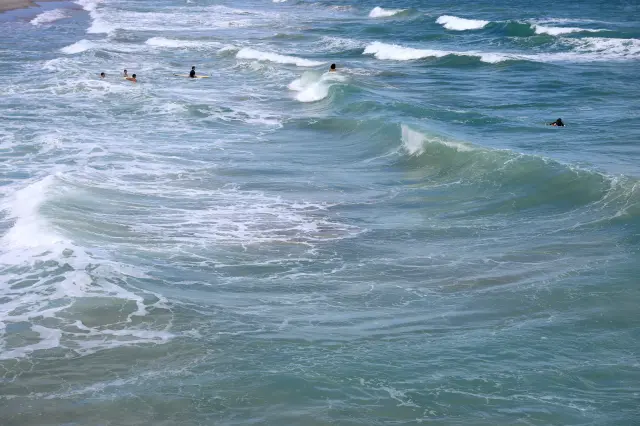
National Weather Service (NWS) officials have issued high rip current risk warnings for large sections of the Florida coastline on Friday, advising more than 3 million residents and visitors to avoid swimming as dangerous marine conditions threaten the state through the weekend.
Newsweek reached out to the NWS offices in Jacksonville and Melbourne, Florida, by phone for comment.
Why It Matters
The widespread warnings affect communities from Escambia, Santa Rosa, and Okaloosa counties in the panhandle to Nassau County in Northeast Florida, and south through Miami-Dade County, covering both the Atlantic and Gulf coasts. The alerts have been issued amid strong onshore winds, which are known to create hazardous surf and powerful rip currents.
These conditions put swimmers, surfers, and beachgoers at risk.

What To Know
Rip current statements are in effect through late Sunday or early Monday morning for the following counties:
- Nassau, Duval, Flagler, St. Johns (Northeast Florida)
- Escambia, Santa Rosa, and Okaloosa in the western panhandle
- Volusia, Indian River, Saint Lucie, Martin, Brevard (East Central Florida)
- Palm Beach, Broward, Miami-Dade (Southeast Florida)
Rip currents are powerful channels of fast-moving water that flow away from the shore, often forming near breaks in sandbars or around piers and jetties. The National Oceanic and Atmospheric Administration (NOAA) reports that rip currents can reach speeds as high as 8 feet per second. The NWS warns that attempting to swim directly against a rip current can be life-threatening, and urges beachgoers to relax and float if caught, then swim parallel to the shoreline once able.
Swimming is strongly discouraged outside of lifeguard-protected areas; inexperienced swimmers are urged to stay completely out of the water during the advisory period.
In some parts of Florida, NWS meteorologists also issued a high surf advisory, warning of large breaking waves up to 10 feet that could create dangerous swimming conditions.
Rip current statements have also been issued for Alabama’s coastal counties.
What People Are Saying
NWS Miami in a high surf advisory: “Dangerous swimming and surfing conditions and localized beach erosion. Rip currents can sweep even the best swimmers away from shore into deeper water.”
NWS Melbourne, Florida, in a rip current statement: “Entering the surf is strongly discouraged. If caught in a rip current, relax and float. Don`t swim against the current. If able, swim in a direction following the shoreline. If unable to escape, face the shore and call or wave for help.”
What Happens Next
Rip current advisories are expected to remain active through Sunday night or Monday morning, depending on the location. The NWS urges all residents and visitors in affected counties to heed warnings, avoid entering the surf, and monitor updates from local officials and forecast offices.






